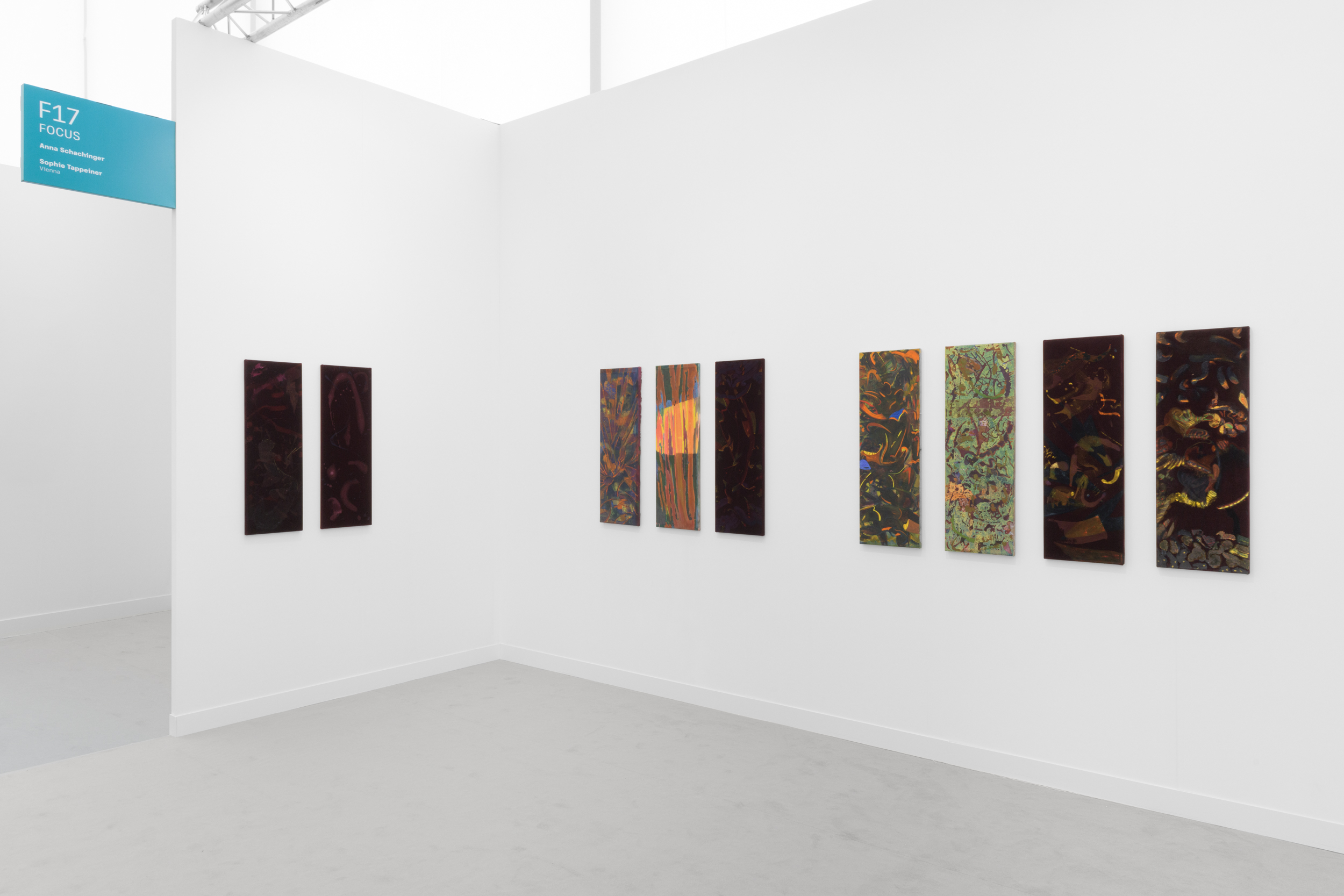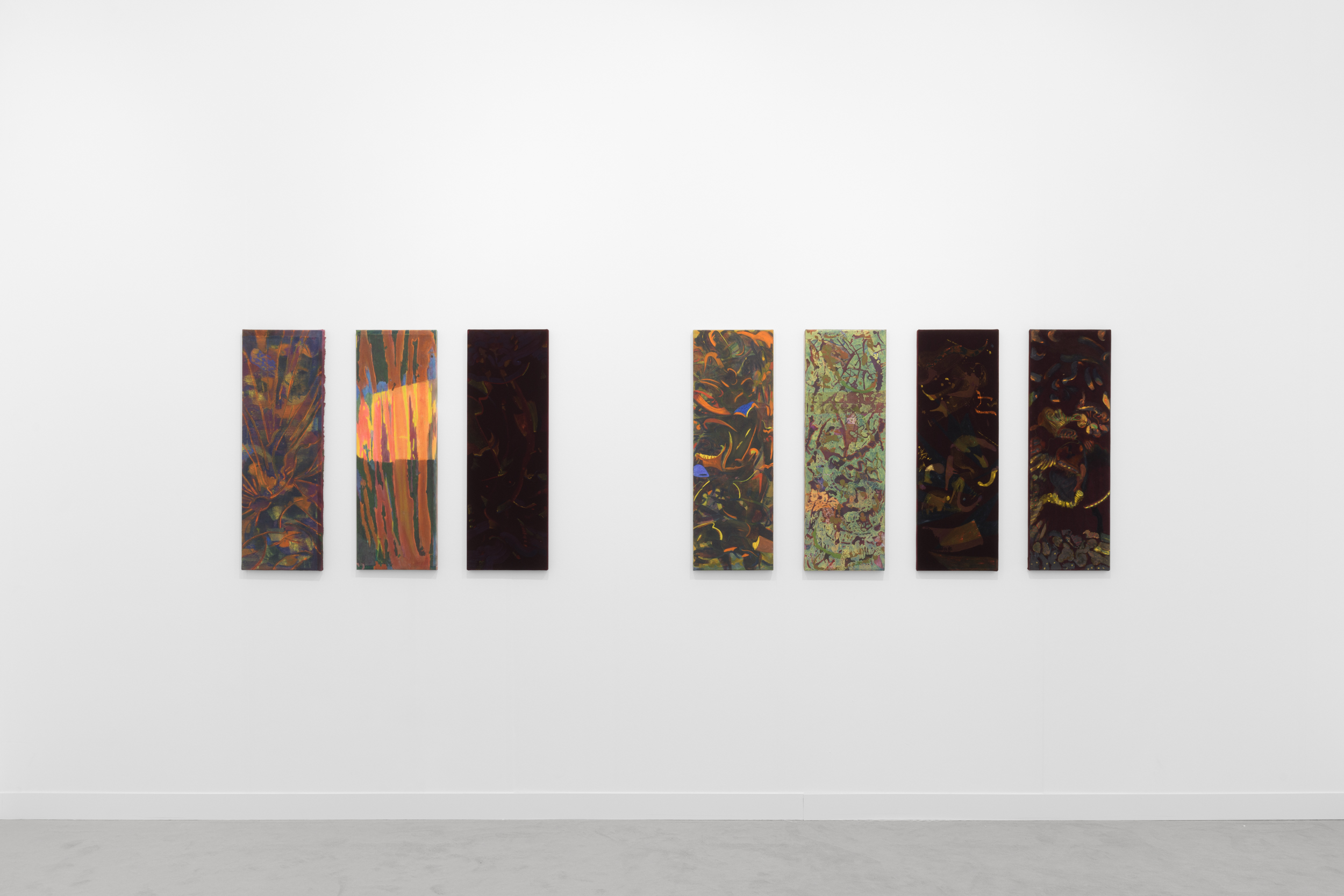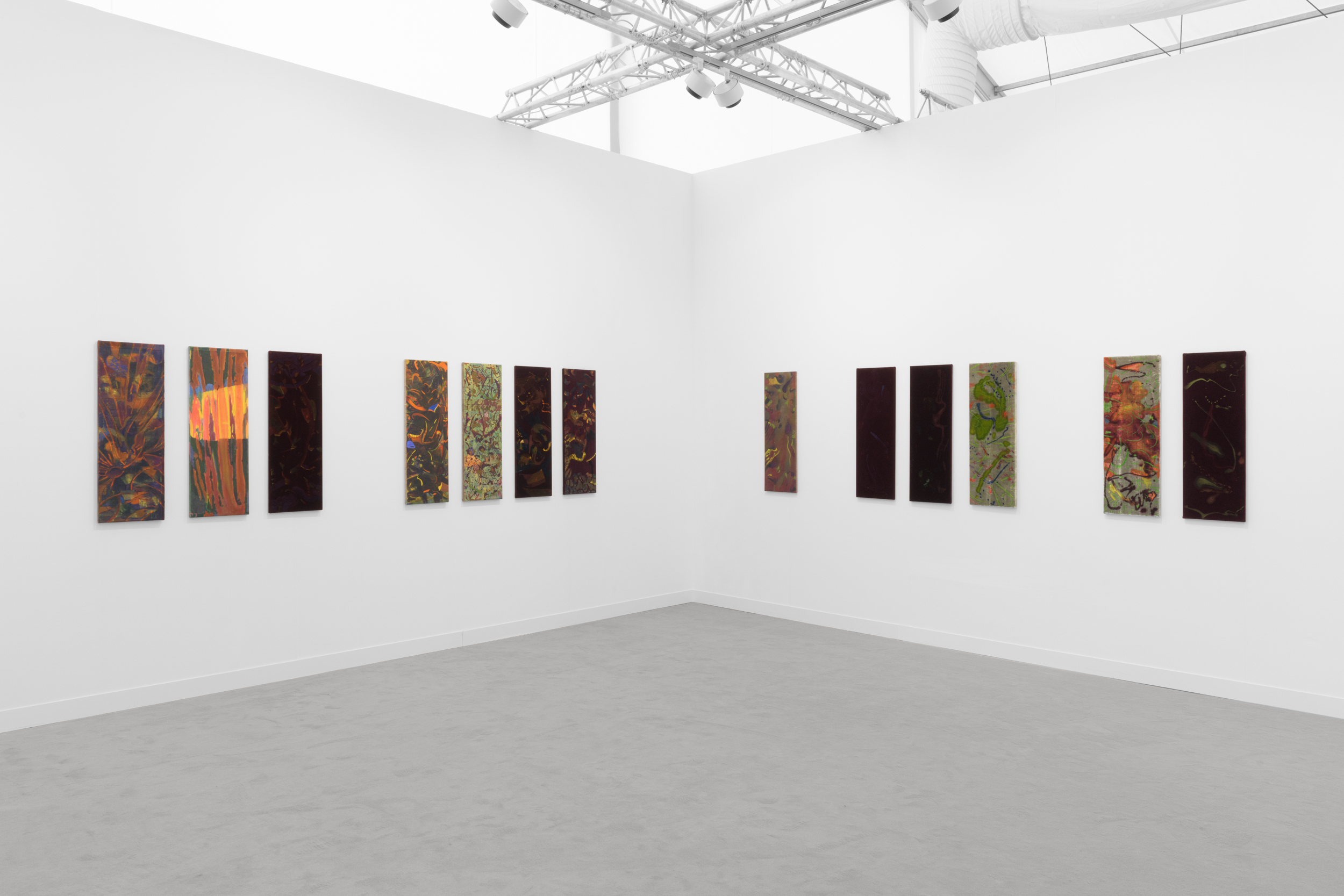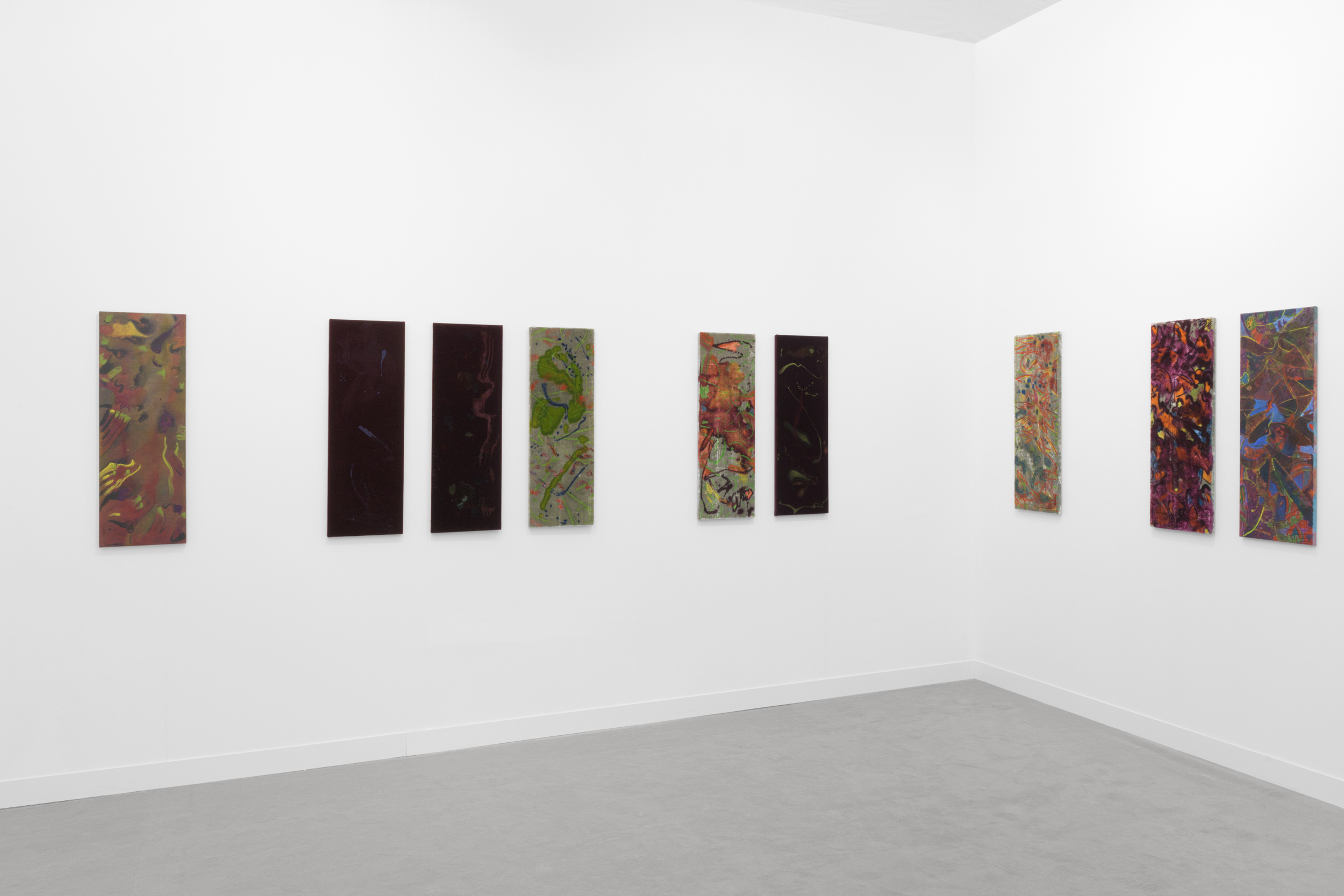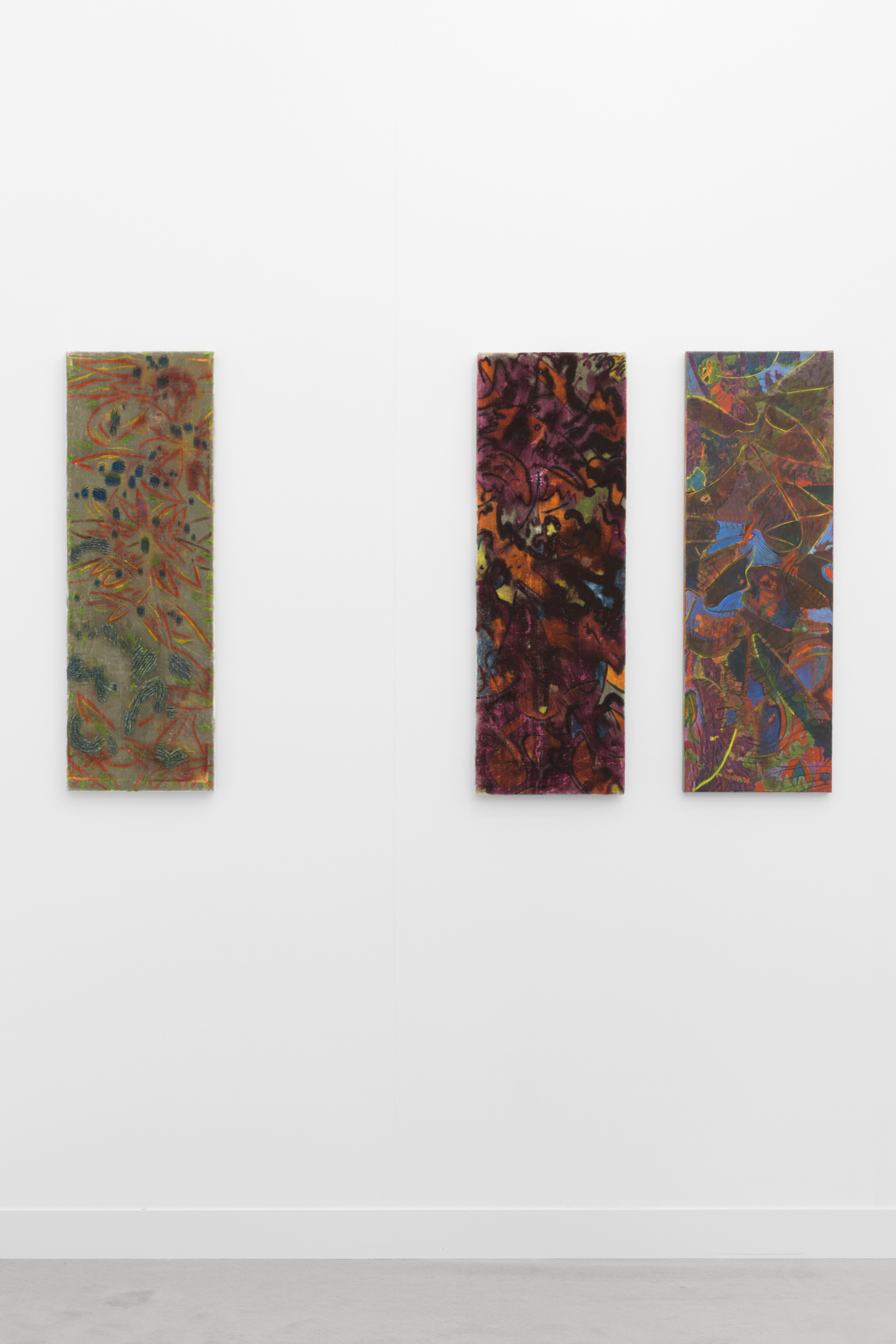If the singular masterpiece was, and to some extent still is, a pervasive norm of Western painting, Anna Schachinger’s series lusco-fusco presents an intriguing alternative. Rather than dominating a wall on their own, her panels seek alliances among themselves and with other things that share their space. Akin to hanging scrolls or panels of folding screens, the high but narrow formats feature a decorative flexibility that renders them emphatically relational. The decorative, here, is not Clement Greenberg’s infamous ‘specter that haunts modernist painting’, or if so, in Schachinger’s case the haunting is on purpose. Her works counter the exclusionary sobriety of modernist easel pictures, as they do not assert themselves against their surroundings, but project playfulness in their eagerness to foster connections to a particular room, niche, or corner, and with their peers. Paintings form pairs and groups of three or four panels, there are some that lend themselves as brackets between which others can be placed. The gentle shine of gray velvet links Fast Vorbei and Sonnenuntergang, whereas the stained, drip-like application of paint also creates affinities to the more restrained, crepuscular qualities of Wir schaffen das and Letzte Meter (Z). Schachinger’s paintings live in context, re-visit one another, and haunt the solitary statement piece with their expansive schemes and instigation of connections.
Simultaneously, the forms we encounter on Schachinger’s panels are resolutely abstract. They result from explorations of process, of materiality and of the mediality of painting: The unruliness of velvet fabric against the brushstroke is contrasted with visual effects that, depending on the material support, range from the soft absorption of paint into porous material to the crisp smoothness of enamel-like surfaces. The variety of combinations of materials and techniques is not simply an ironic gesture towards painting’s artistic depletion but indicates genuine aesthetic experimentation. It is this sincerity towards painting as a medium which impregnates the lusco-fusco series against the nihilistic allure of ‘Bad Painting’. Coextensively these abstractions allude to liminal phenomena, transitions from one place and time to another. Prickly lines that overgrow soft mossy ground call to mind unkempt vegetation on the wayside. A sliver of light that lingers over formations of color and glimmering gold markings next to deep velvet darkness evoke fading light at the end of a long summer day. Schachinger’s titles tease out the imaginary play between material surface effects and experiences in between day and night, at the margins of well-defined and well-lit places, and the potentiality of depiction. However alluring these images, they are merely suggested, abstracted in joyously meandering traces of paint.
Ultimately, the unusual format of these panels is relational in its own right. The narrow vertical format does not only evoke a decorative mode of the pictorial but also precisely mirrors the upright posture of the viewer in front of the paintings and heightens the impression of the picture as a subjective counterpart. This may be why we are particularly inclined to perceive these paintings as ‘potential images’ and to follow their suggestive trail of figural configurations, for example, the profile of a face in Drache. Anna Schachinger’s panels not only evoke themes of connection, intimacy and co-existence metaphorically, but also embody them experientially. If her paintings live and thrive in context, we, too, are entangled in their net.
– David Misteli, Barbara Reisinger
PRESS
